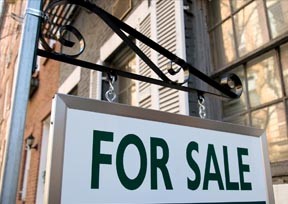Vacancies create a host of problems for owners besides lost income. Here’s a list of some problems to be aware of, and what you can do to mitigate them.
Vandalism: Empty buildings practically call out to vandals. Although your commercial property policy covers property damage due to vandalism, most policies severely limit coverage once a building is vacant for a certain period of time, usually 30 or 60 days.
Theft: You might ask yourself what would thieves want to steal from an empty building. You might be surprised—with the cost of copper up, copper pipes and wiring have become targets for theft. Other fixtures and appliances that have resale value can also be targets for theft. As with vandalism, your policy will likely limit theft coverage for vacant buildings.
Water damage: The longer your building is vacant, the higher your chances of water damage, as systems and building components degrade. And because the building is vacant, damage can be much more extensive than it would have been if noticed and controlled earlier.
Liability: If you fail to properly secure a vacant building, you could be held liable for injuries to trespassing children under the “attractive nuisance” doctrine. This holds that the landowner needs to protect children from accessing a hazardous object or condition on his/her property that they are likely to find attractive. Under this doctrine, the vacant building itself could be the “attractive nuisance.”
Local regulations: In addition to securing their vacant property, many municipalities are requiring owners to continue to provide basic maintenance, keeping the property clean and preventing it from becoming an eyesore.
Insuring Your Vacant Property
Your business owners policy (BOP) or commercial property policy protects your property from loss due to physical damage, such as fire and vandalism. However, most commercial property policies have a vacancy provision that severely limits or denies coverage under certain circumstances. A typical vacancy provision denies coverage for losses due to vandalism, sprinkler leakage—unless you have protected the system from damage—building glass breakage, water damage, theft and attempted theft. It also reduces by 15 percent the amount it will pay for property damage due to other covered causes of loss once the building becomes vacant.
The vacancy provisions under most policies kick in after a specified time period, such as 30 or 60 days. But what exactly does “vacant” mean? The ISO standard building and personal property coverage form states that the building is vacant unless the owner is using 31 percent or more of its square footage for its “customary operations.” So if you’re using former office space for storage, your insurer might consider it “vacant,” although it is not empty.
You can ask your insurer to endorse your policy to provide coverage during the vacancy. If you know that your property will likely be occupied within a few months, your insurer might extend your coverage with no or few questions. However, if the vacancy is likely to be extended, your insurer might refuse to cover your property. In that case, you’ll need a vacancy policy. This nonstandard coverage varies by insurer. For information, please contact us.



